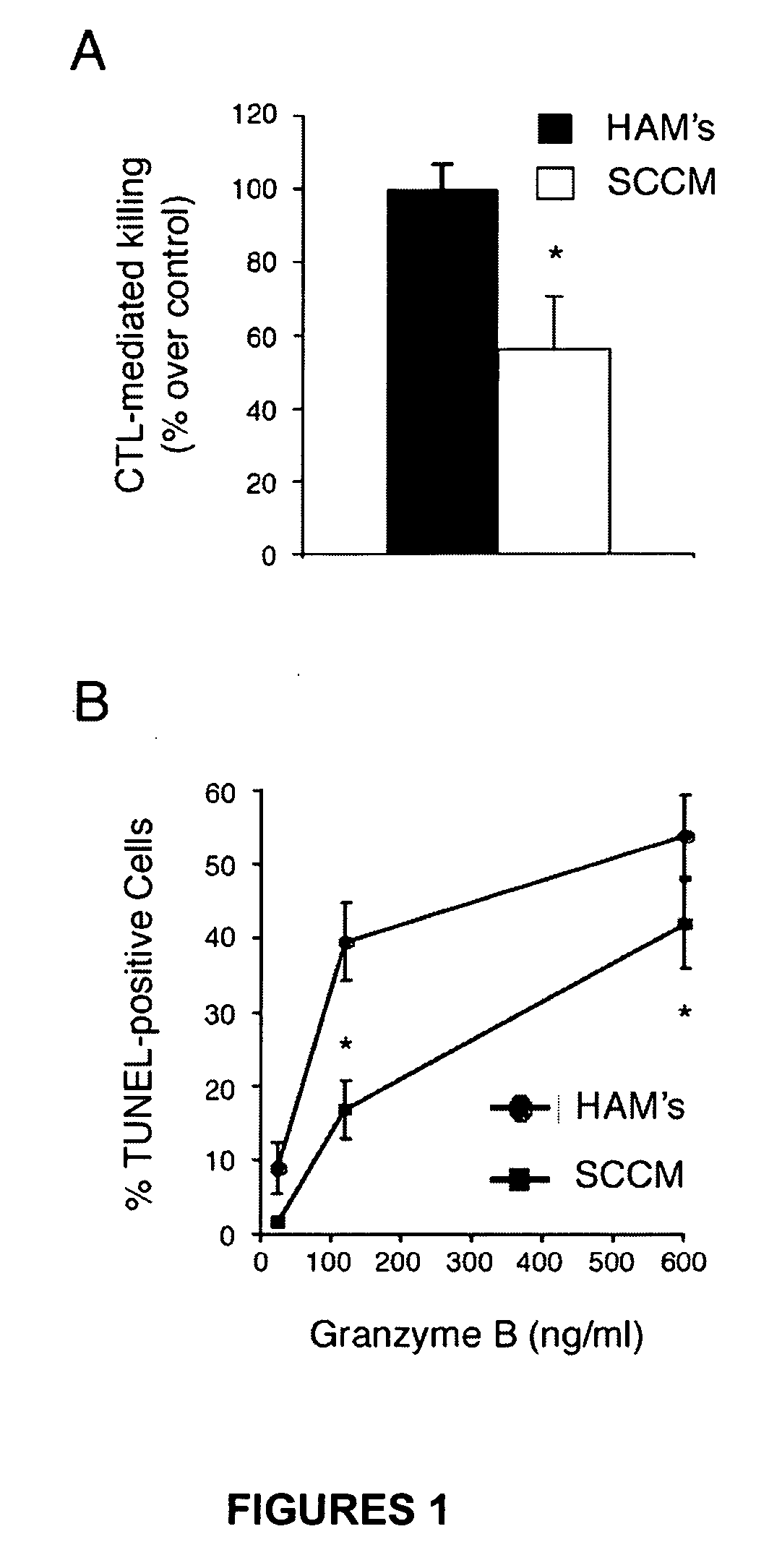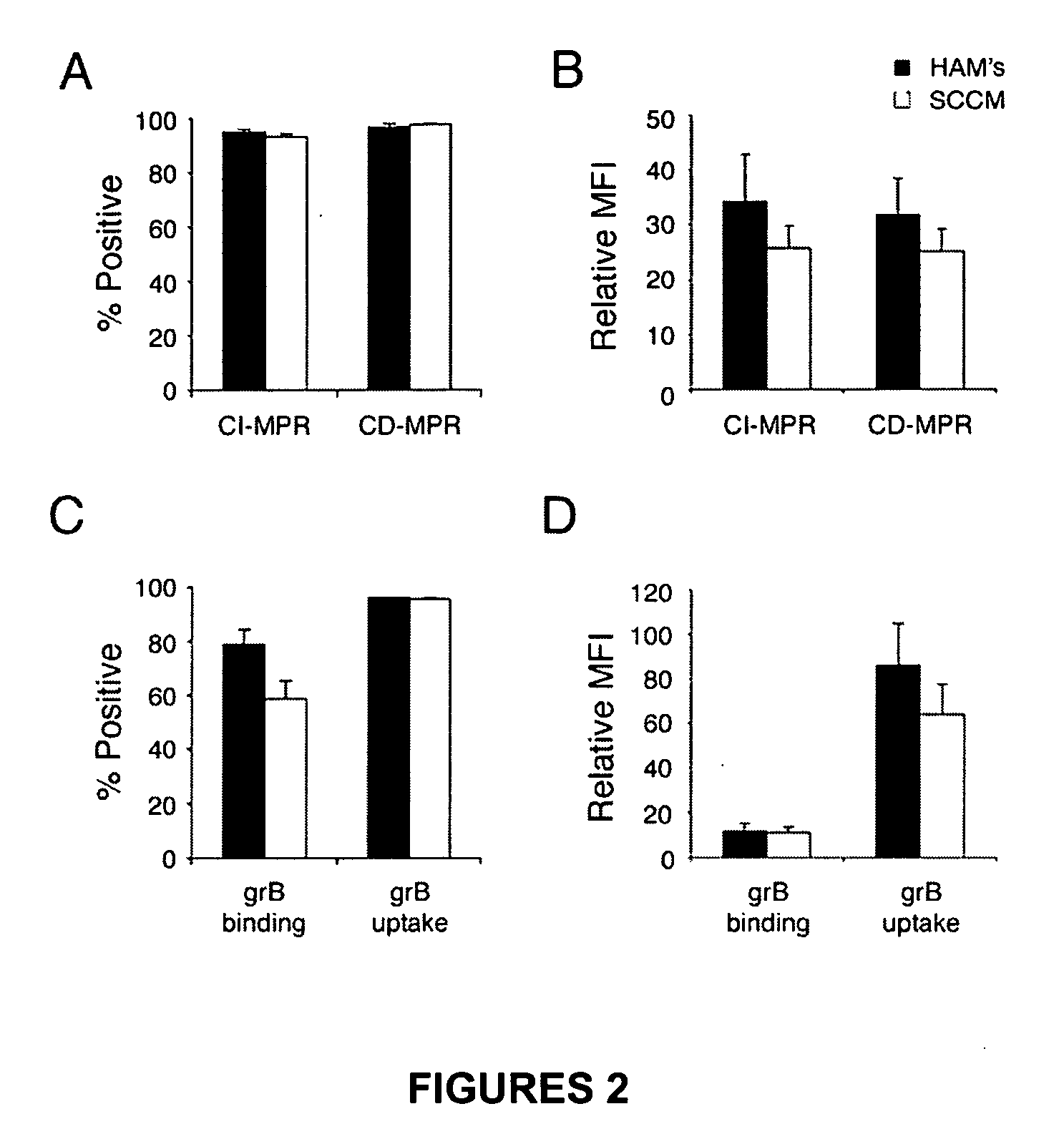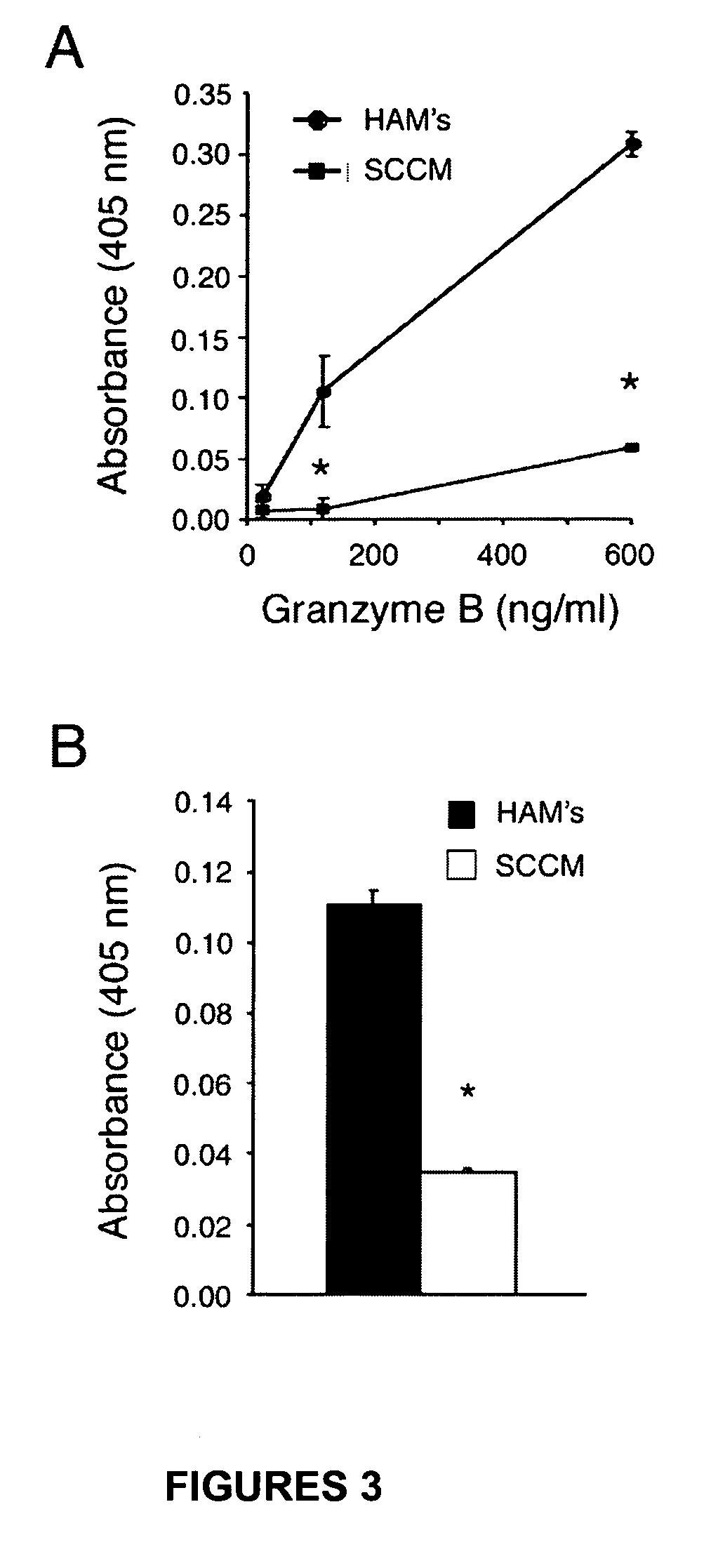Compositions for and methods of granzyme B inhibition
a technology of granzyme b and granule b, which is applied in the field of compositions for and methods of granzyme b inhibition, can solve the problems of apoptosis and death of the target cell, and achieve the effect of reducing the immune respons
- Summary
- Abstract
- Description
- Claims
- Application Information
AI Technical Summary
Benefits of technology
Problems solved by technology
Method used
Image
Examples
example 1
Xenotransplantation of a Porcine Heart into a Primate
[0131] Granzyme B inhibitory activity (e.g., activity of serpina3n) may be used to overcome immune rejection of a transplanted organ. Xenotransplantation, for example, using organs transplanted from a pig can provide a readily available source of organs such as heart; however, immune rejection of organs presents a major obstacle to widespread clinical adoption. By using the methods of the present invention, this obstacle may be overcome. To this end, a transgenic pig engineered to express a granzyme B inhibitory serpin (e.g., serpina3n) may be generated using methods known in the art, e.g., as described in Velander et al. (Proc. Natl. Acad. Sci. USA 89, 12003-12007 (1992)). The transgene includes a promoter operably linked to a gene encoding a granzyme B inhibitory serpin such as serpina3n, where the promoter is capable of driving expression in cardiac tissue of the heart.
[0132] Transplantation of a pig heart (e.g., from a serpi...
example 2
Transplantation of Porcine Islet Cells Expressing Serpina3n
[0134] Porcine islet cells may be especially useful in transplantation for treatment of diabetes. As noted above, neonatal porcine islets are the best candidate for eventual transplantation into humans (Korbutt et al., Annals New York Academy of Sciences 831:294-303 (1997)), as compared to adult porcine islets, which are fragile and difficult to maintain in tissue culture, and fetal porcine islets, which exhibit poor insulin secretory response to glucose (Ricordi et al., Surgery 107:688-694 (1990); van Deijnen et al., Cell Tissue Res. 267:139-146 (1992); Korsgren et al., Diabetologia 34:379-386 (1991)).
[0135] Isolation and growth of neonatal porcine islets may be carried out as described by Korbutt et al. (J. Clin. Invest 97:2119-2129 (1996)). Cells prepared in this manner may be either derived from a transgenic pig expressing a gene encoding a granzyme B inhibitory serpin such as serpina3n, or cells from a wild-type pig m...
example 3
Transplantation of Fish Islet Cells Expressing Serpina3n
[0136] The use of fish Brockmann bodies in transplantation to treat diabetes are advantageous in that they can be isolated without a lengthy procedure; also, no endogenous retrovirus transmittable to humans has been identified in fish. Microencapsulation of fish Brockmann bodies is possible, and encapsulated Brockmann bodies can restore euglycemia in diabetic mice. However, wild-type fish Brockmann bodies are subject to hyperacute immune rejection in humans, and the endogenous insulin in Brockmann bodies is less suitable than human or porcine insulin for treatment of diabetes in humans. As in the above example, the methods of the present invention may be used to overcome these limitations in treatment of patients in need of insulin such. To this end, transgenic fish expressing two exogenous genes, (1) a gene encoding a granzyme B inhibitory serpin (e.g., serpina3n) and (2) a gene encoding human insulin may be generated. A prom...
PUM
| Property | Measurement | Unit |
|---|---|---|
| concentrations | aaaaa | aaaaa |
| concentrations | aaaaa | aaaaa |
| concentrations | aaaaa | aaaaa |
Abstract
Description
Claims
Application Information
 Login to View More
Login to View More - R&D
- Intellectual Property
- Life Sciences
- Materials
- Tech Scout
- Unparalleled Data Quality
- Higher Quality Content
- 60% Fewer Hallucinations
Browse by: Latest US Patents, China's latest patents, Technical Efficacy Thesaurus, Application Domain, Technology Topic, Popular Technical Reports.
© 2025 PatSnap. All rights reserved.Legal|Privacy policy|Modern Slavery Act Transparency Statement|Sitemap|About US| Contact US: help@patsnap.com



